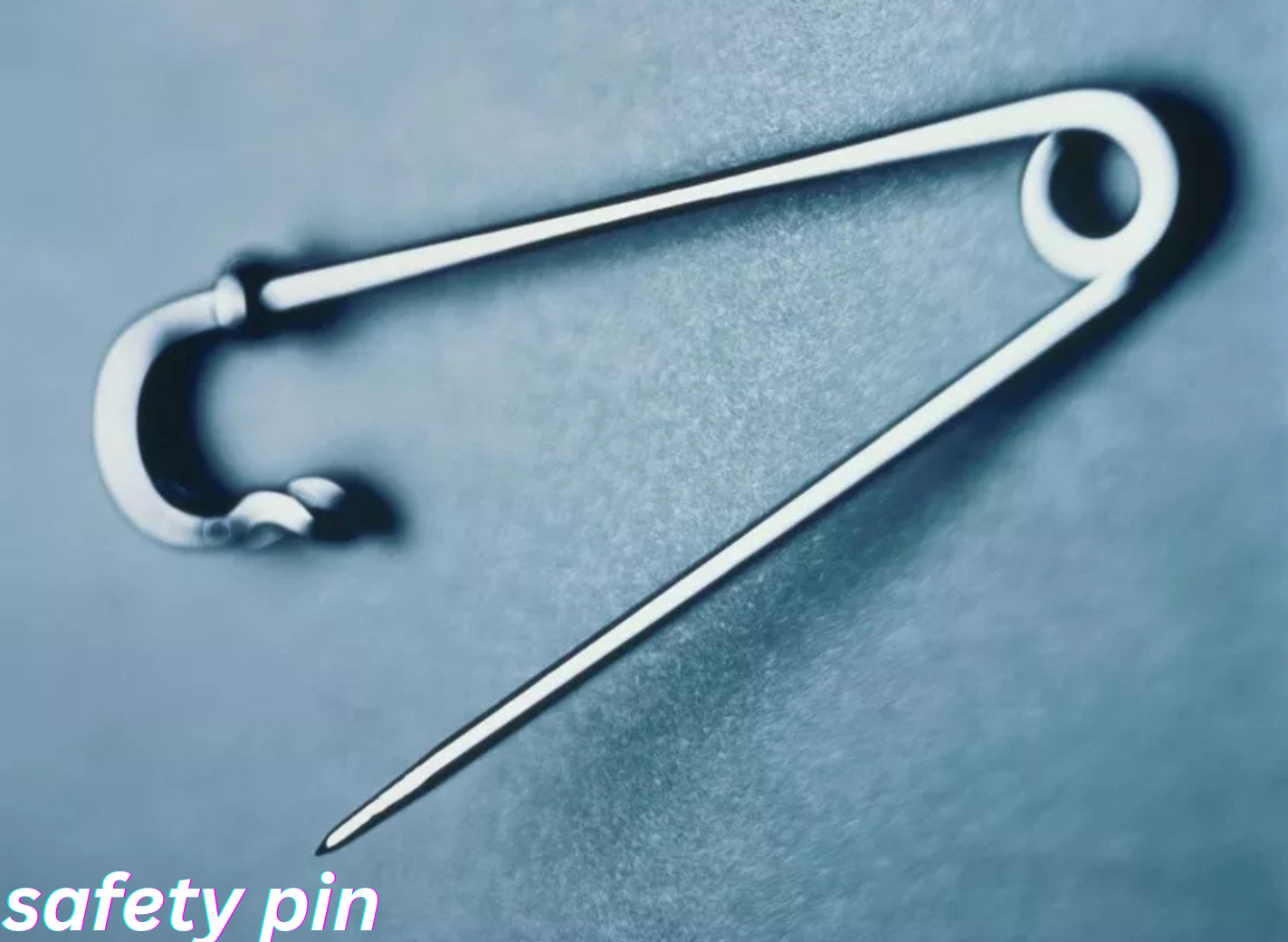The safety pin is one of those everyday objects so common that we often overlook its significance. Simple in design yet remarkably versatile, the safety pin has been a staple in homes, workplaces, and fashion scenes for over a century. Whether tucked into sewing kits or pinned to protest banners, it represents both utility and expression in a single form.
This tiny tool, consisting of a coiled wire and a clasp to cover the sharp point, offers much more than basic fabric fastening. It is used in first-aid emergencies, survival kits, and even in cultural symbolism. Over time, the safety pin has evolved from a functional necessity to a global icon, appearing on red carpets, political demonstrations, and in countless DIY creations.
In this article, we explore the fascinating journey of the safety pin—from its ancient origins to its contemporary applications. We’ll delve into how this unassuming item became a symbol of resistance and solidarity, a tool for resourceful living, and a fashion statement. Let’s unlock the history and hidden power of the safety pin.
The Origins and Evolution of the Safety Pin
The history of the safety pin stretches back thousands of years, even before the invention of the modern version we know today. Archaeological findings have uncovered primitive brooches and fibulae used by ancient civilizations such as the Greeks, Romans, and Etruscans to fasten garments. These early pins lacked the safety mechanism that protects users from accidental pricks, yet they served a remarkably similar purpose.
The turning point in safety pin history came in 1849 when American inventor Walter Hunt patented the modern safety pin. Interestingly, Hunt is said to have created it in just three hours as a quick way to pay off a $15 debt. His design featured a coiled wire that provided tension and a clasp that securely shielded the sharp end, marking the birth of the safety pin as we know it. Hunt sold the patent for a mere $400, unknowingly giving away a product that would go on to achieve global ubiquity.
As industrialization progressed, manufacturers experimented with different materials such as brass, stainless steel, and plastic. Over time, safety pins were mass-produced and improved for strength and safety. Today, we have a variety of styles and sizes tailored for everything from diapering babies to attaching tags on clothing in retail stores. Despite its simplicity, the safety pin continues to evolve, maintaining its relevance in modern society.
Practical Applications More Than Just Fastening Fabric
At its core, the safety pin is a problem-solving device. One of its most common uses is mending clothing in a pinch—literally. Whether you’re securing a broken zipper, fixing a fallen hem, or keeping a scarf in place, the safety pin acts as an instant tailor. It’s a must-have in every emergency sewing kit, travel pouch, or drawer, proving its worth time and again in daily life.
Beyond fashion, safety pins play a crucial role in first aid. They can be used to fasten bandages, create slings, or even remove splinters in survival situations. In emergency medical kits, they are valued for their versatility and reliability. Outdoor enthusiasts often keep a few safety pins in their backpacks for makeshift repairs to gear like tents or backpacks, or even to fish in a survival scenario.
Organizational uses also abound. A safety pin can bundle small items like keys or thread spools, or keep sock pairs together in the laundry. In classrooms and craft rooms, safety pins help manage supplies or serve as part of creative projects. Parents use them to clip name tags onto children’s clothes, while travelers rely on them to add extra security to luggage zippers. In every scenario, the safety pin proves that function can indeed meet ingenuity.
Safety Pins in Fashion and Style
Few everyday objects have crossed the boundary from utility to fashion quite like the safety pin. In the 1970s and 1980s, safety pins became synonymous with punk rock culture. Rebels and music icons, most notably members of bands like the Sex Pistols, wore safety pins as body piercings, earrings, and accessories to express non-conformity and defiance. What began as a statement of anti-establishment sentiment soon evolved into a fashion trend embraced worldwide.
Modern designers have since elevated the humble safety pin into high fashion. From Vivienne Westwood to Versace, iconic fashion houses have incorporated safety pins into their collections, creating dresses and accessories that blend rebellion with elegance. The famous black Versace gown held together by oversized gold safety pins, worn by Elizabeth Hurley in 1994, remains one of fashion’s most unforgettable moments.
In the DIY and sustainable fashion world, safety pins have become symbols of creativity and resourcefulness. They allow wearers to adjust clothing for a better fit, create entirely new designs, or upcycle old garments without sewing. Jewelry made from safety pins—beaded bracelets, chokers, and brooches—continues to trend on platforms like Etsy and Pinterest. With a little imagination, this simple tool transforms into a canvas for personal expression and craftsmanship.
Symbolism and Social Movements
The safety pin’s role in society goes far beyond fastening fabric or decorating outfits—it has also become a powerful symbol of solidarity and protest. In the wake of the Brexit referendum in 2016 and the U.S. presidential election later that year, people began wearing safety pins on their clothes to signal support for marginalized groups. The movement spread through social media with the message: “You are safe with me.”
This quiet yet visible gesture quickly gained international attention, illustrating how an ordinary object could become a beacon of hope and allyship. The safety pin became a visual statement against racism, xenophobia, and hate. However, the movement also drew criticism from some activists who questioned the sincerity and impact of symbolic gestures without concrete action.
Beyond this modern context, safety pins have a rich legacy in political and cultural protests. In South Africa, during apartheid, protestors used safety pins as part of silent resistance. In other global movements, artists have used oversized or distorted safety pins in sculptures and installations to provoke thought about unity, struggle, and the fabric of society. These meanings evolve depending on context but consistently demonstrate the emotional and cultural weight carried by such a tiny object.
Conclusion
The safety pin may be small, but its impact is anything but. From its origins in ancient times to its formal invention in the 19th century, this unassuming tool has cemented its place as both a practical solution and a cultural icon. Whether you’re securing a dress, signaling solidarity, or creating avant-garde jewelry, the safety pin offers endless possibilities.
Its journey through history, fashion, emergencies, and protests reminds us that simplicity does not equal insignificance. In many ways, the safety pin exemplifies the power of design—how a single item can remain relevant, useful, and symbolic across centuries. As we navigate modern life filled with complexity, the safety pin stands as a humble yet powerful ally, ready to serve with purpose and meaning.
FAQs
Who invented the safety pin and why?
Walter Hunt invented the modern safety pin in 1849 as a way to pay off a $15 debt. He patented the coiled design with a safety clasp to prevent injury.
Are there different types of safety pins for specific purposes?
Yes, safety pins come in various sizes and materials. Some are rust-resistant for medical use, while others are heavy-duty for upholstery or large fabric projects.
How can I use a safety pin in an emergency situation?
In emergencies, safety pins can be used to fasten bandages, make slings, secure torn clothing, or even serve as fishing hooks in survival scenarios.
What is the significance of wearing a safety pin today?
Wearing a safety pin has become a sign of solidarity with marginalized groups and a statement against discrimination, especially since 2016.
Can safety pins be recycled or reused sustainably?
Yes, metal safety pins are reusable and durable. Some are recyclable depending on local guidelines, and they are widely used in upcycling fashion.
You May Also Read: https://zibbusiness.com/how-to-delete-tiktok-story/





